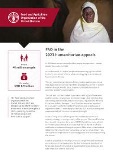Publications
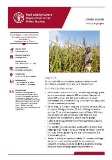
South Sudan: Project Highlights - OSRO/SSD/801/EC
08/2024
The European Union contributed EUR 2 million (USD 2 277 200) to the FAO project, "South Sudan rural development: Strengthening smallerholders resilience in Northern Bahr el Ghazal", which was implemented from 15 April 2019 to 14 April 2023.
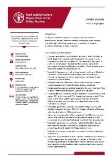
South Sudan: Project Highlights - OSRO/SSD/105/EC
08/2024
The European Union contributed EUR 4 million (USD 4 854 368) to the FAO project, "Strengthening the resilience of vulnerable populations to food crises and climate stresses in South Sudan", which was implemented from 1 August 2021 to 31 July 2023.
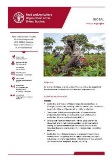
Global: Project Highlights - GCP/GLO/997/NET
08/2024
The Government of the Kingdom of the Netherlands contributed USD 28 million to the FAO project, "Food and Nutrition Security Resilience Programme (FNS-REPRO): Building food system resilience in protracted crises", which was implemented from 1 October 2019 to 31 March 2023.
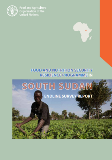
Food and nutrition security resilience programme in South Sudan: Endline survey report
05/2024
This report provides an overview of the impact evaluation findings of the FNS-REPRO project in South Sudan.

Resilience Building in South Sudan: FAO Programme Review 2024
04/2024
The FAO Regional Office for Africa (RAF) collaborates with several African countries in Sub-Saharan Africa, including South Sudan, to enhance resilience building efforts.

South Sudan: DIEM – Data in Emergencies Monitoring brief, round 4
03/2024
This Data in Emergencies Monitoring (DIEM-Monitoring) brief shares the results of a fourth-round assessment conducted from July to September 2023 in South Sudan.

South Sudan: Contributions to mitigating conflict between mobile pastoral communities
03/2024
This learning brief documents the main lessons drawn from the South Sudan country investment project entitled Resilient Pastoral Livelihoods and Education implemented by the Food and Agriculture Organization of the United Nations and its partners.

South Sudan: Humanitarian Needs and Response Plan 2024
03/2024
Humanitarian needs in South Sudan are expected to reach a record high this year. Amid a complex emergency that has displaced millions and destroyed livelihoods, more than half the population will be acutely food insecure during the lean season from April to June.
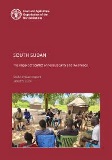
South Sudan: The impact of conflict on food security and livelihoods
02/2024
Food insecurity in South Sudan is driven by cascading shocks including conflict and insecurity, macro-economic crisis caused by the depreciation of the local currency, high inflation, conflict in the Sudan, climatic shocks (floods and dry spells), climate- and conflict-induced population displacement.
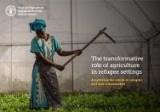
The transformative role of agriculture in refugee settings
11/2023
Forced displacement has reached a scale not seen since records began. It has not only increased to an unprecedented level, but so too has its average duration.
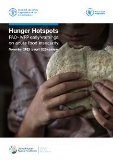
Hunger Hotspots: FAO–WFP early warnings on acute food insecurity
10/2023
FAO–WFP early warnings on acute food insecurity: November 2023 to April 2024 outlook

South Sudan: Belgium's contribution through the Special Fund for Emergency and Rehabilitation Activities (SFERA)
10/2023
The outbreak of conflict in the Sudan has driven over 5.4 million people to flee in search of safety. Of this total, over 290 000 have sought refuge in South Sudan – a place many had once called home; a place many had already once fled.
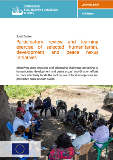
Participatory review and learning exercise of selected humanitarian, development and peace nexus initiatives - Learning Brief
07/2023
This Learning Brief presents the findings of a participatory review and learning exercise (PRLE) conducted by the South Sudan Food Security Cluster on selected initiatives at the humanitarian, development and peace (HDP) nexus in South Sudan.

South Sudan: Humanitarian Response Plan 2023
04/2023
Climate extremes, conflict and a poor economic environment continue to drive humanitarian needs in South Sudan, where over half of the population is acutely food insecure.

Monitoring food security in food crisis countries with conflict situations
12/2022
This report provides an update on the acute food insecurity in countries and territories that have the world’s highest burden of people in need of emergency food, nutrition and livelihood assistance as a result of protracted conflict combined with other factors.

Enhancing nutrition in emergency and resilience agriculture responses to prevent child wasting: FAO's child wasting prevention action plan (2023–2024)
11/2022
As part of the United Nations Global Action Plan on Child Wasting, FAO requires USD 500 million to implement its action plan to prevent child wasting (2023–2024) in the 15 most-affected countries.
.tmb-th600x450.jpg?Culture=en&sfvrsn=bfb57cad_6)
South Sudan: DIEM – Data in Emergencies Monitoring brief, round 3
10/2022
This Data in Emergencies Monitoring (DIEM-Monitoring) brief shares the results of a third-round field assessment conducted between May and July 2022 in South Sudan.
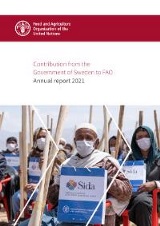
Contribution from the Government of Sweden to FAO: Annual report 2021
10/2022
In 2021, the Government of Sweden, through the Swedish International Development Cooperation Agency (Sida), contributed SEK 94 million (USD 11.08 million) to the Food and Agriculture Organization of the United Nations (FAO) emergency and resilience programme.
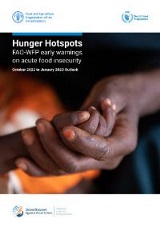
Hunger Hotspots: FAO-WFP early warnings on acute food insecurity (October 2022 to January 2023 Outlook)
09/2022
The Food and Agriculture Organization of the United Nations (FAO) and the World Food Programme (WFP) warn that acute food insecurity is likely to deteriorate further in 19 countries or situations – called hunger hotspots – during the outlook period from October 2022 to January 2023.

